Assam: Majuli – 3 cycling bachelors meet the romantic love
16. November 2025

A bicycle tour was planned for today. That seemed like a good idea to cover some distance while still traveling at a leisurely pace. And to make it easier to find the way, have contact with people, and learn even more, I also booked a guide and a lunch with a family. And then Bhakti joined as well — a 28-year-old Gujarati who lives in Mumbai, loves spending time in the mountains (she had just come from a trek in Arunachal), and was traveling solo.
We rented the bicycles; the saddles were adjusted and the tires fully pumped up again. They were multi-gear bikes, but without a gear shifter — so you only had one gear available.
 1
1
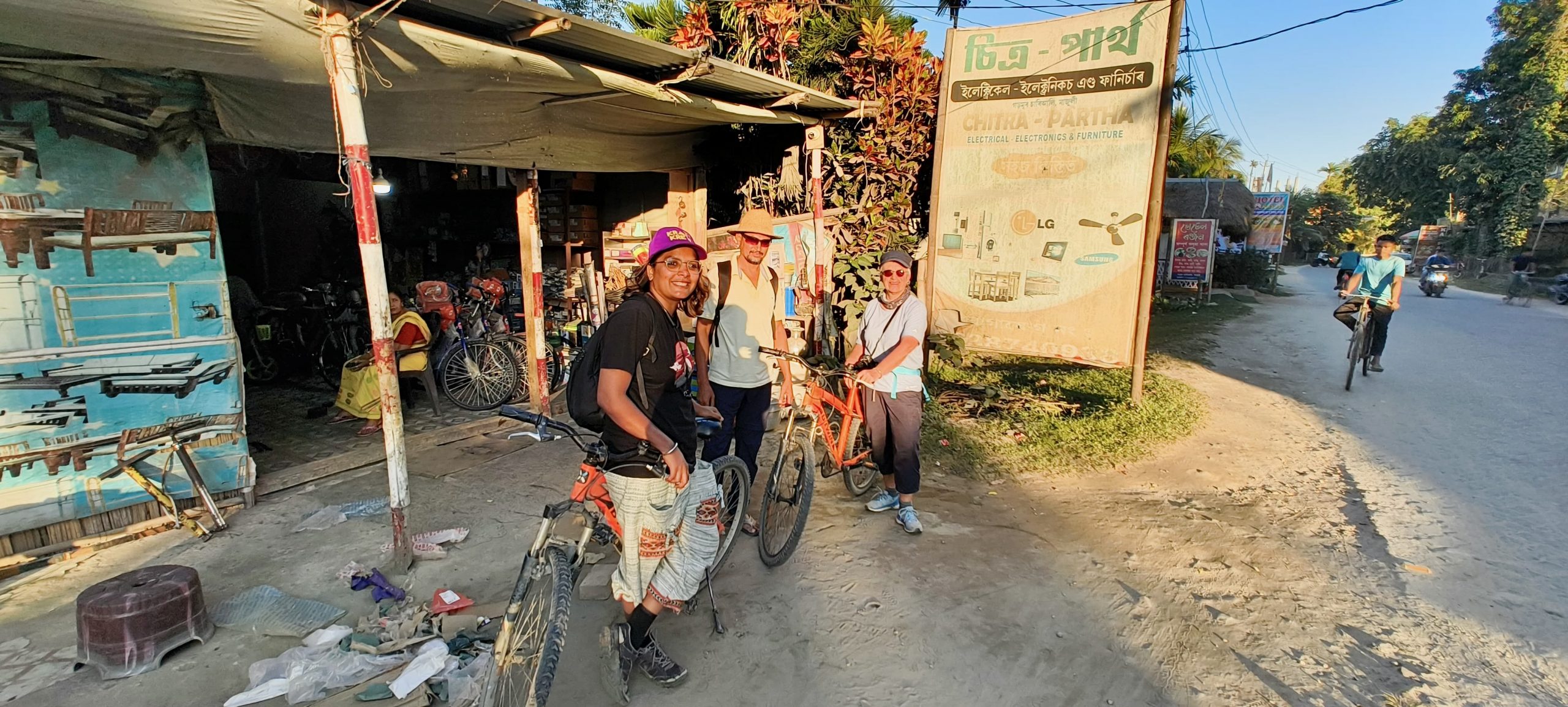 2
2
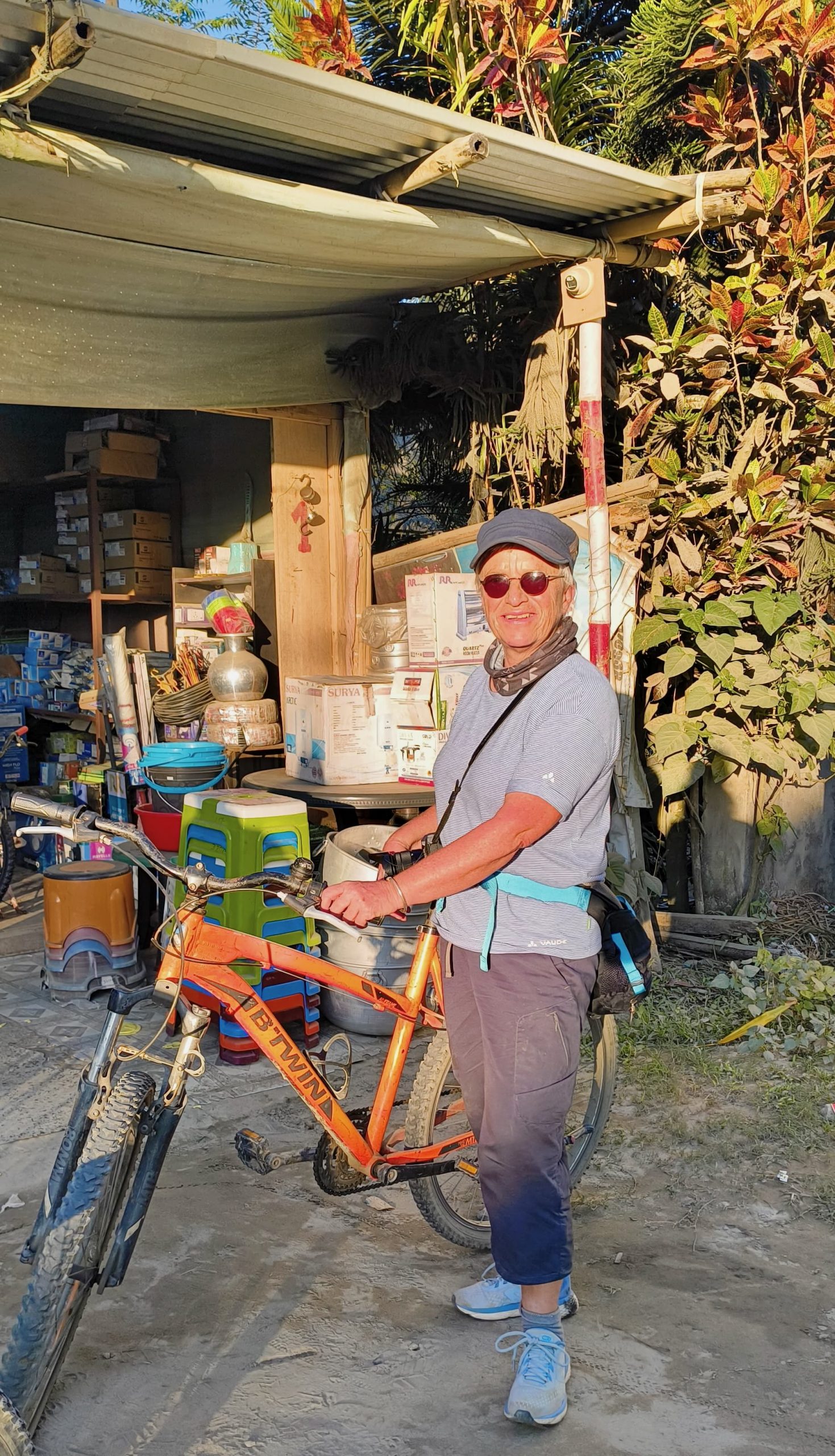 3
3
Our guide’s name is Raju — and he is, surprisingly, unmarried at 47. That’s rare in India. And his parents aren’t chasing after him, telling him it’s about time, either. Things seem a bit more modern here. So in the end, we were three bachelorettes!
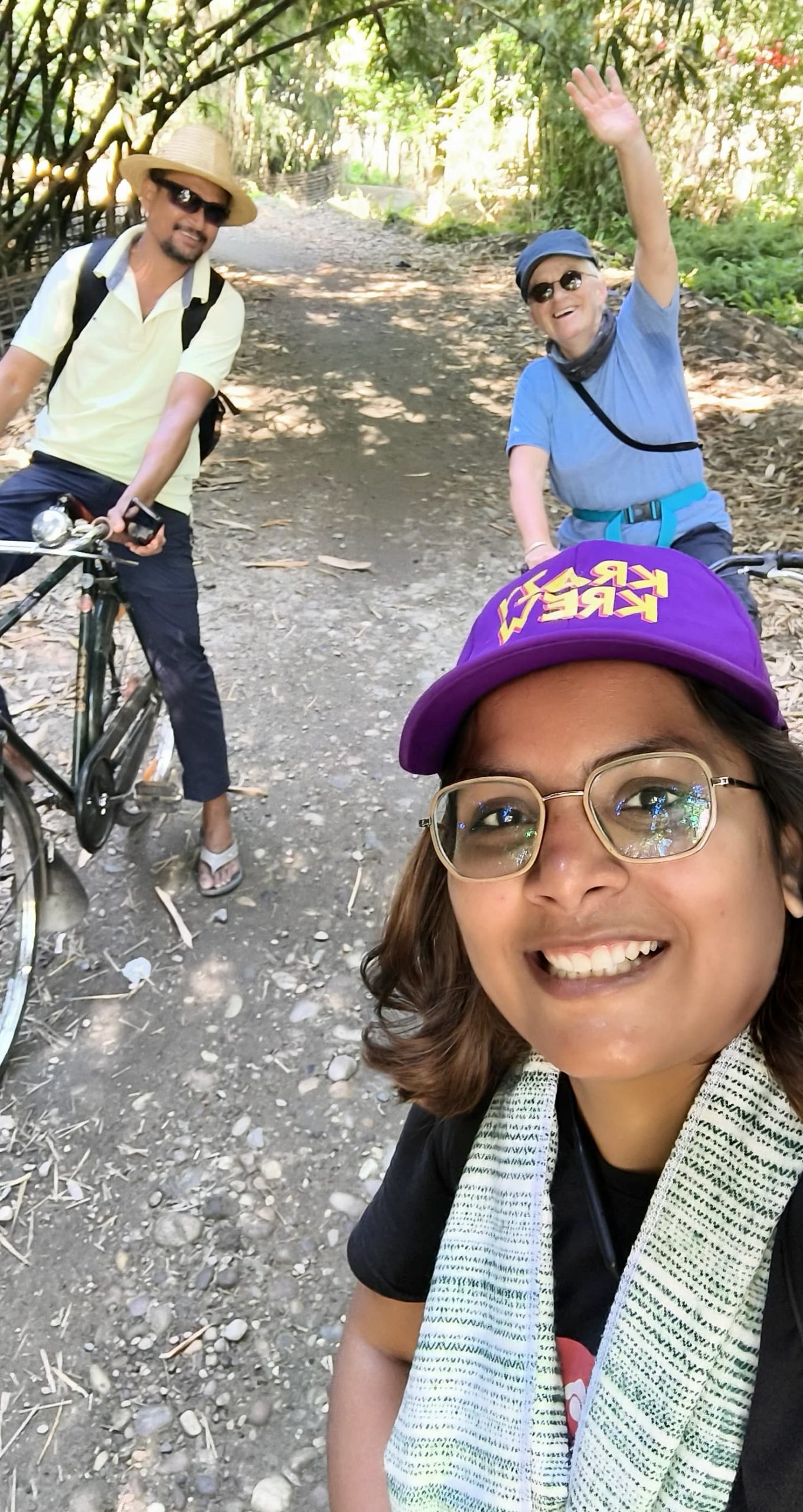 4
4
We cycled along paths and bumpy tracks, between fields (mustard isn’t blooming yet, mostly lentils and potatoes) and through villages. First, we went to a river with the longest bamboo bridge on the island.
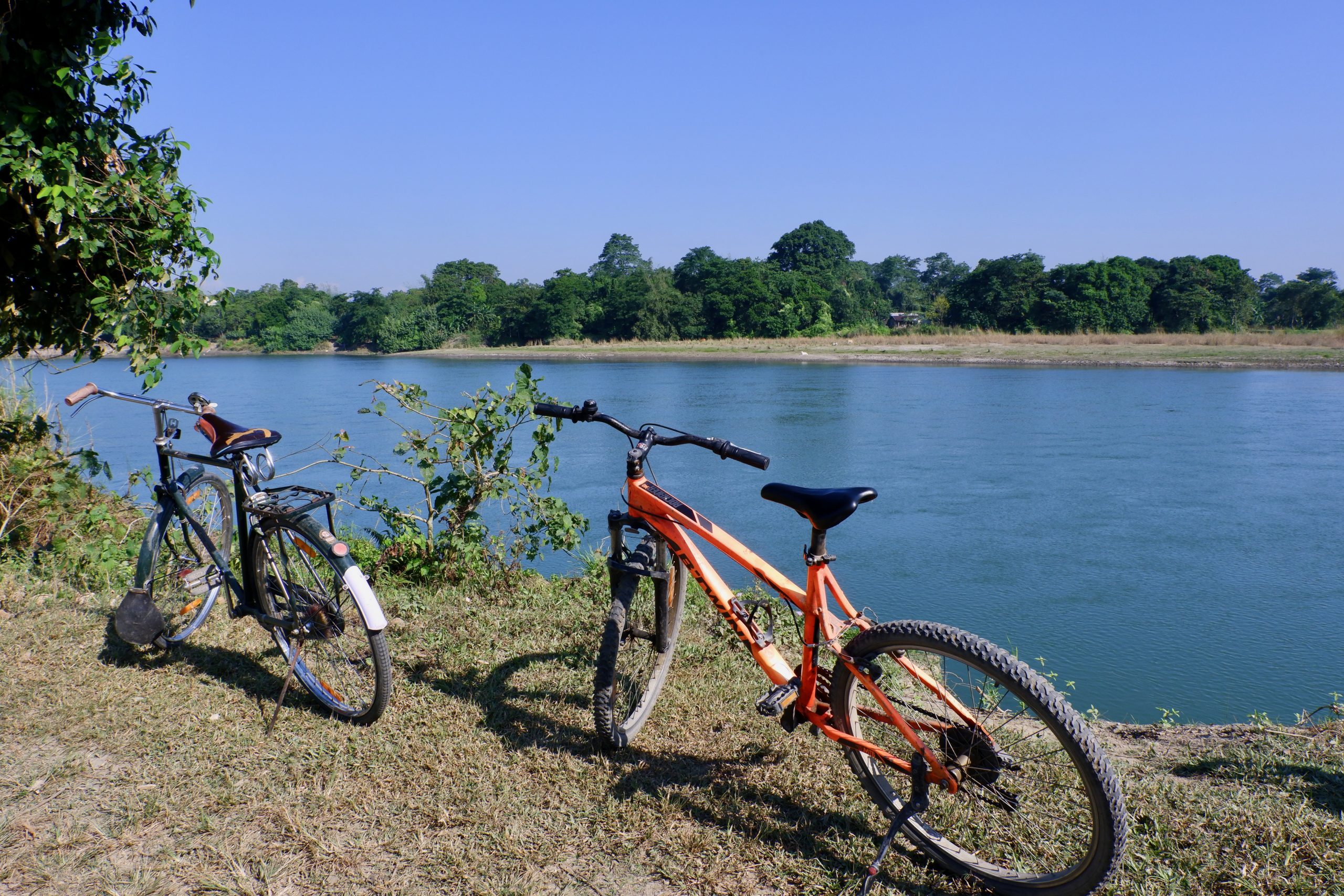 5
5
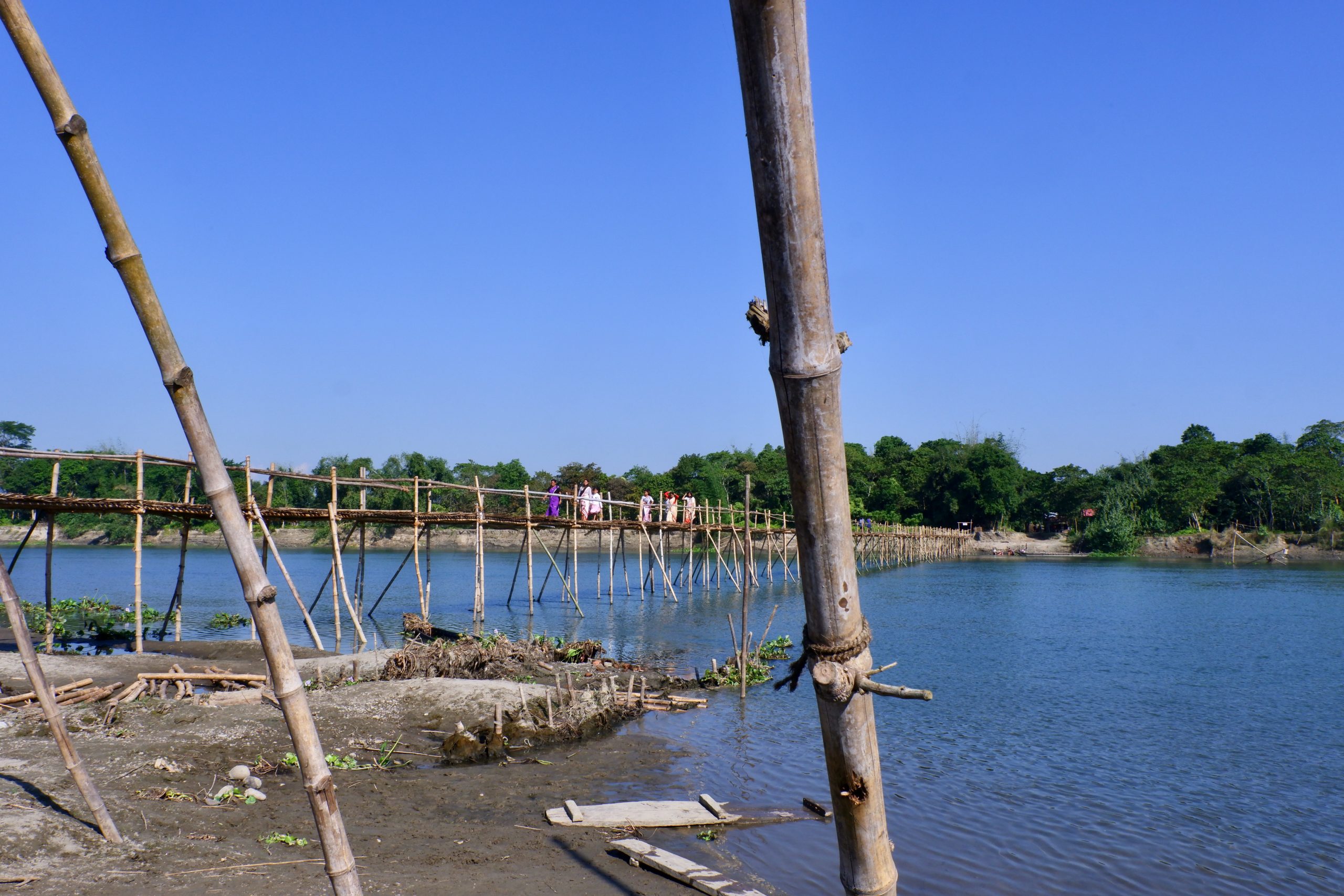 6
6
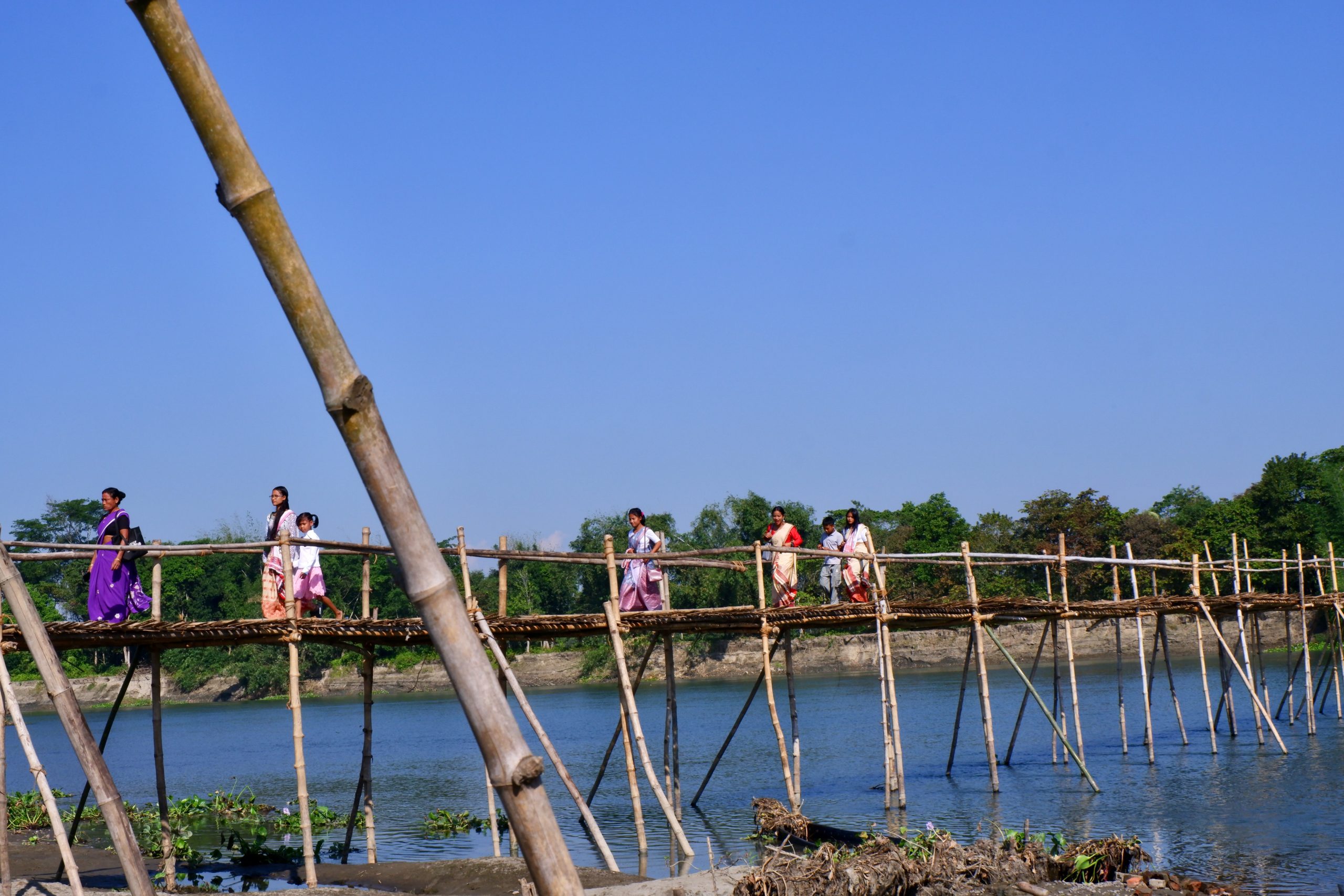 7
7
 8
8
You can also cross the river on a ferry — which is important if you want to transport wider items. At the moment, the raft was lying around on the other side or serving as a diving platform. Amusingly, several men appeared with their toothbrushes, jumped into the water (I only caught the jumps on video), and brushed their teeth.
 9
9
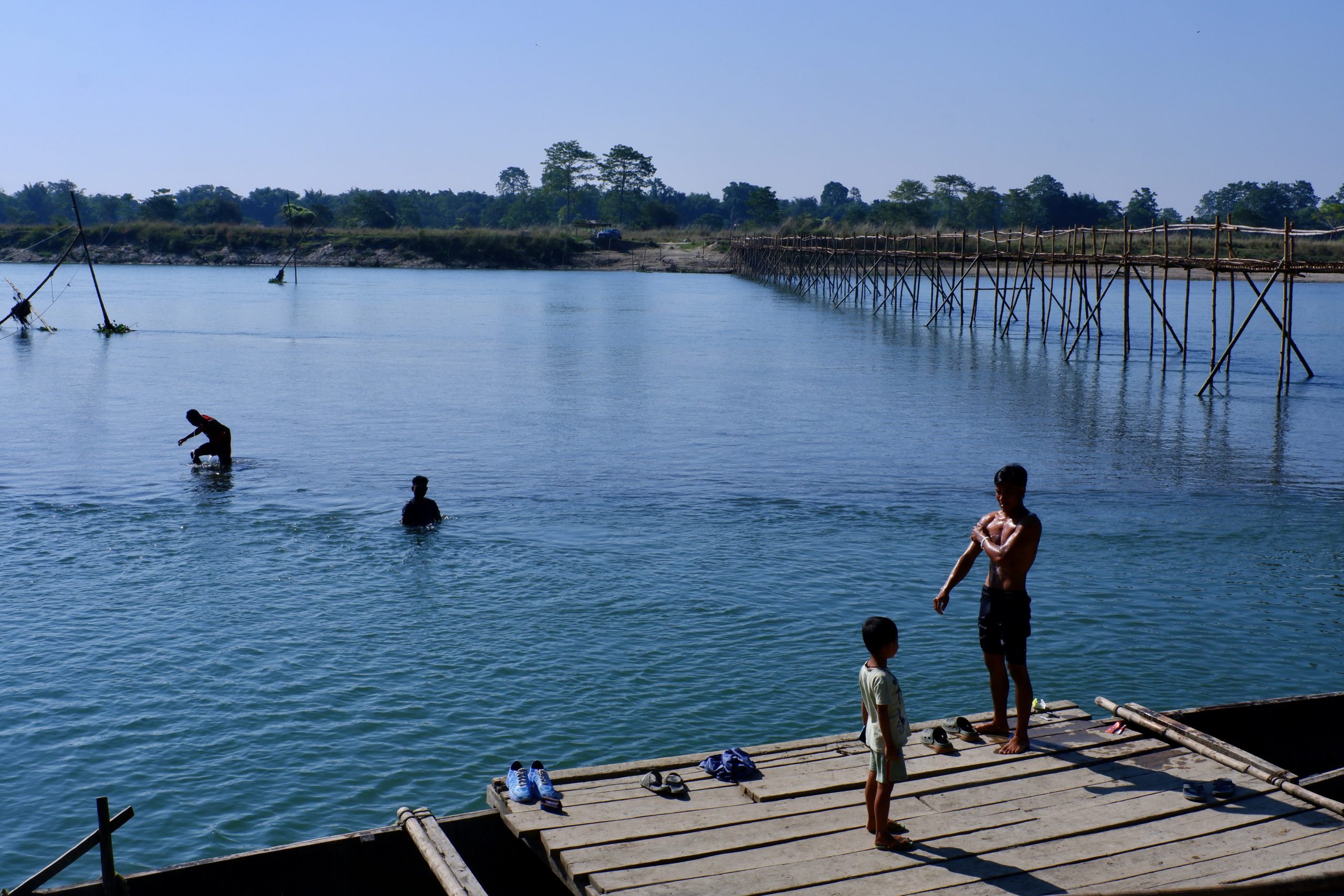 10
10
A woman was busy with the laundry.
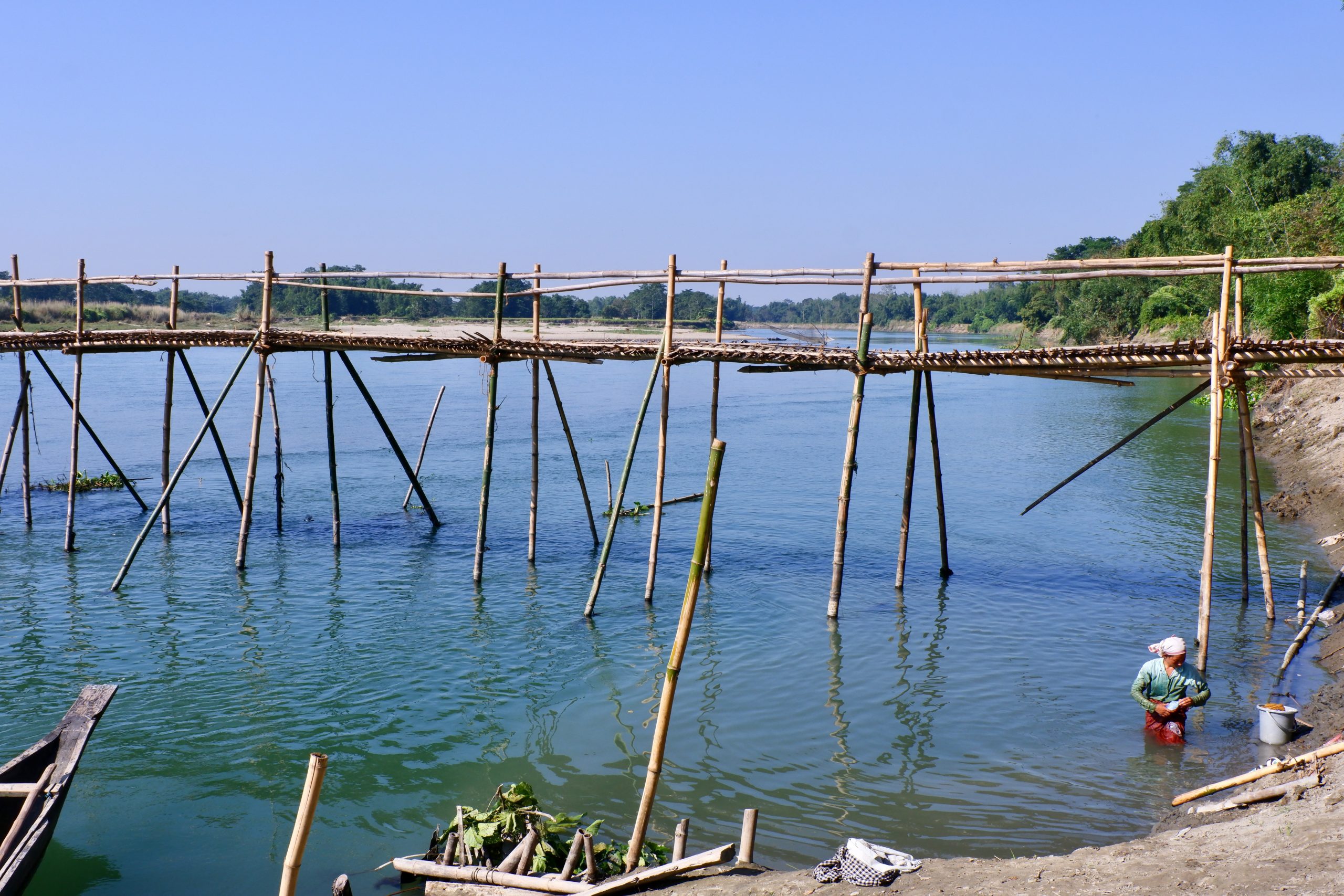 11
11
There was also a Chinese fishing net further away.
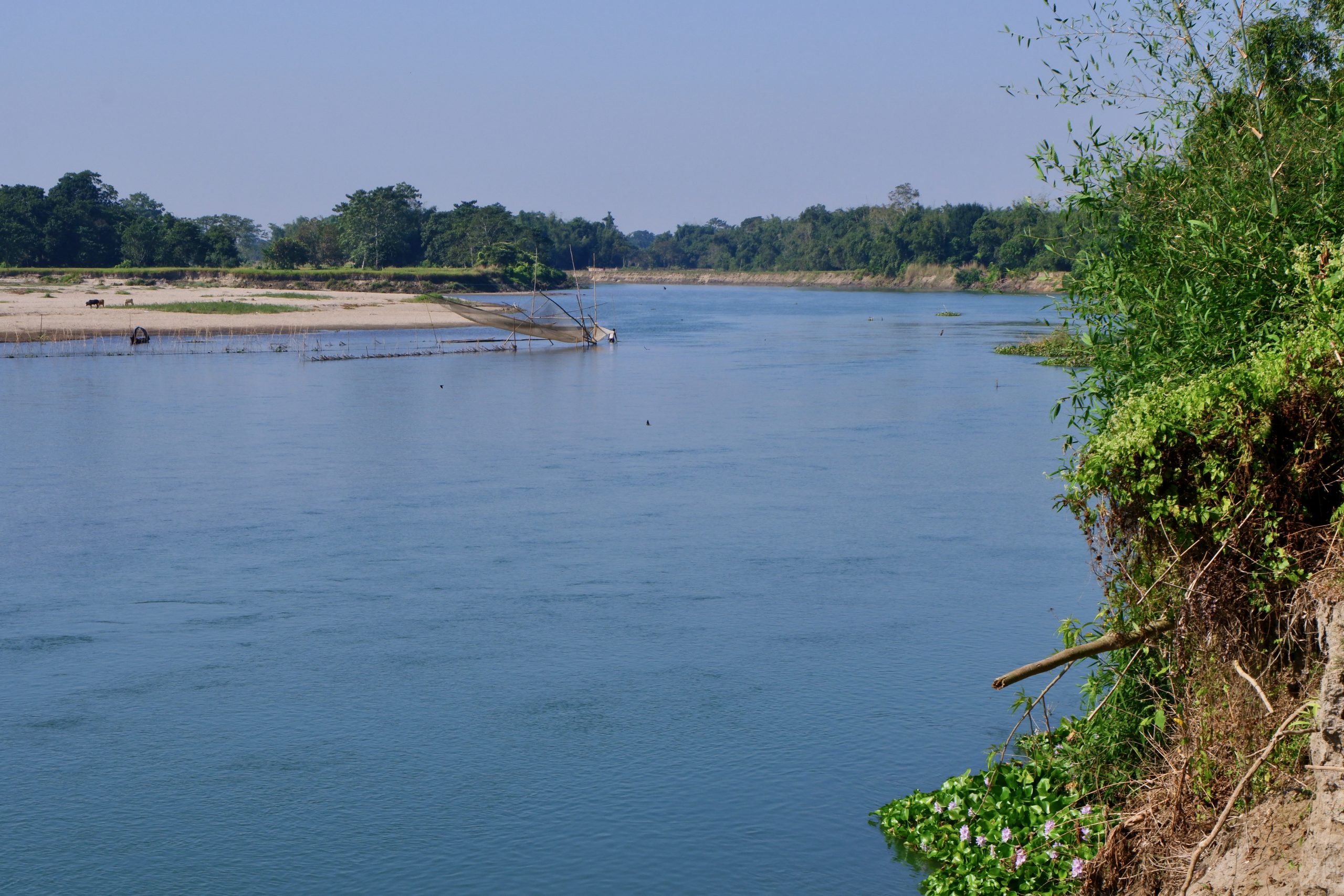 12
12
By the way, you have to pay to cross the bridge. Anything that goes over it is charged — including pigs and cows (pigs: 10 INR, cows: 20 INR). Chickens might be free. There’s a little kiosk where someone collects the money, and people also like to hang out there, play cards, and drink rice wine. The containers on the right-hand bench contain the alcohol.
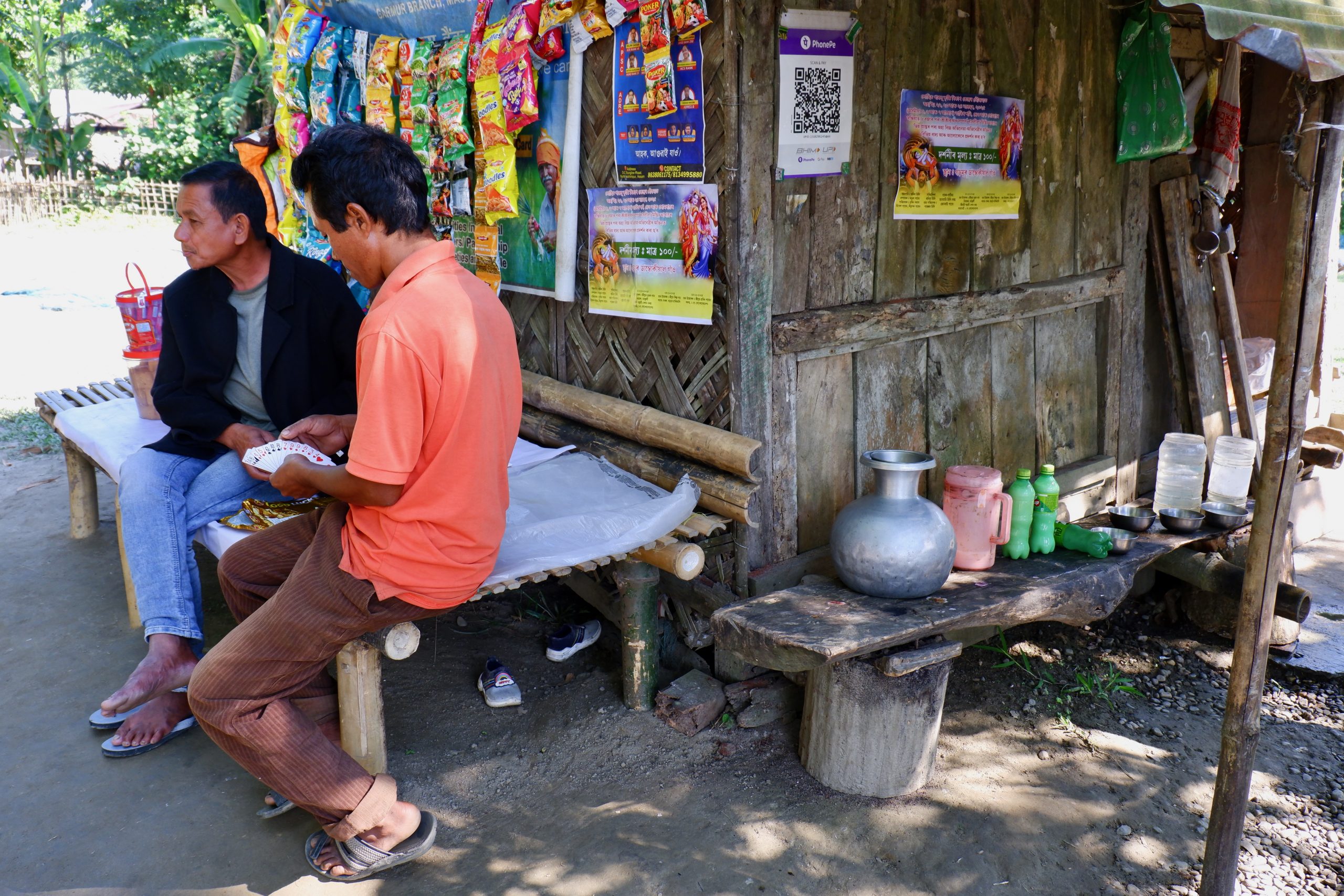 13
13
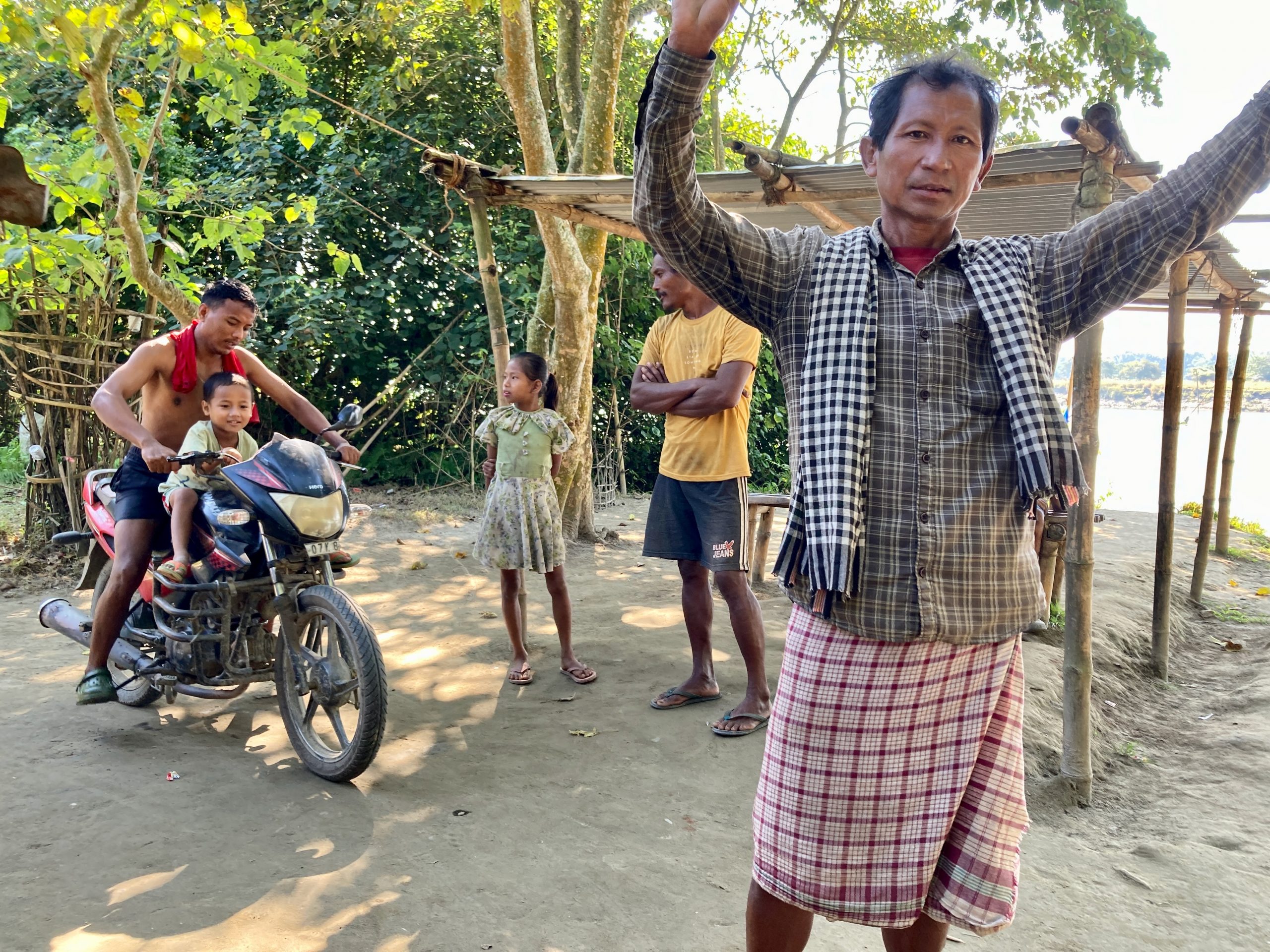 14
14
 15
15
Right next to it is a village. This is where the Mishings live, an ethnic group mainly based on Majuli. They originally came from the hills of Arunachal but migrated down into the river plains. Their houses are traditionally built of bamboo with a thatched roof and raised on stilts. This protects them from excess moisture (mould), flooding, and also provides excellent storage space, room for the loom, and living space for animals. The kitchen is always slightly separate and can be recognised by its darker roof.
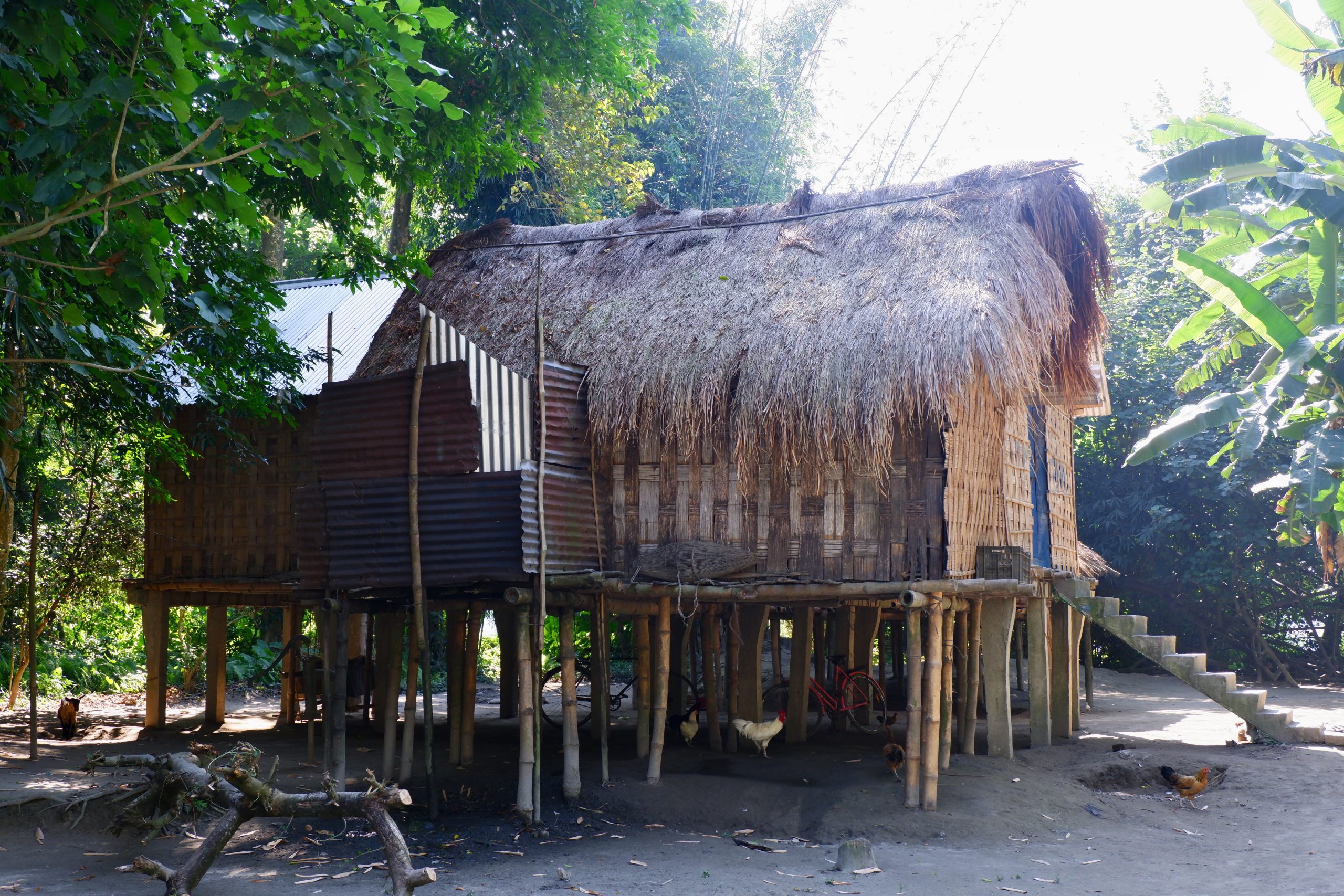 16
16
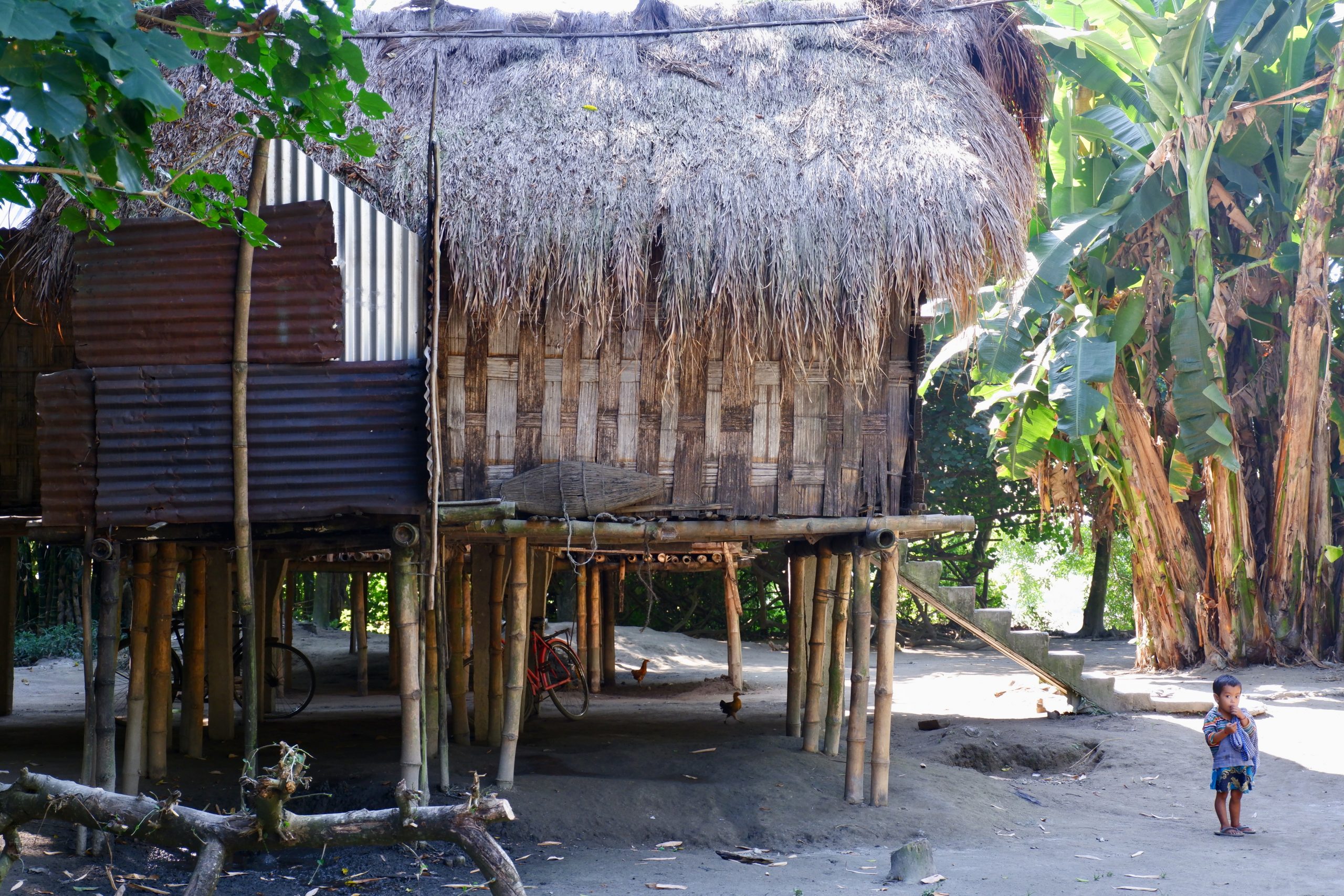 17
17
Since bamboo is becoming increasingly scarce, people receive support if they build with concrete. There are already entire concrete houses, as well as mixed forms (including ones with corrugated metal roofs).
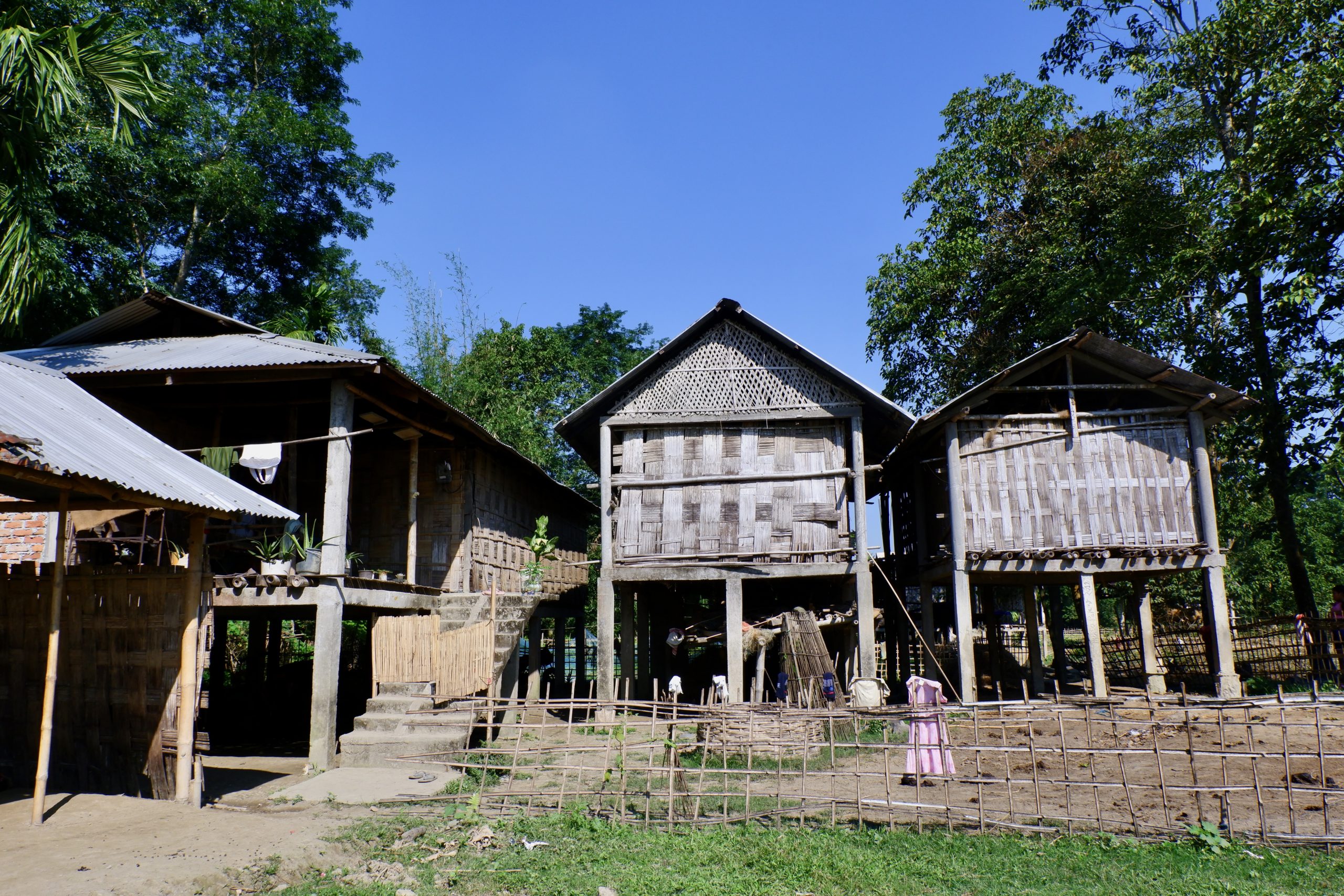 18
18
There are many fences, but everything still feels open, friendly, and inviting. And it was very clean.
 utensil for grinding rice
utensil for grinding rice
People were going about their daily tasks, catching small fish and bringing rice home. Bicycles are widely used here—for getting around and for transporting things. One child had just received a new one—it cost 9,000 INR (about 90 Euros).
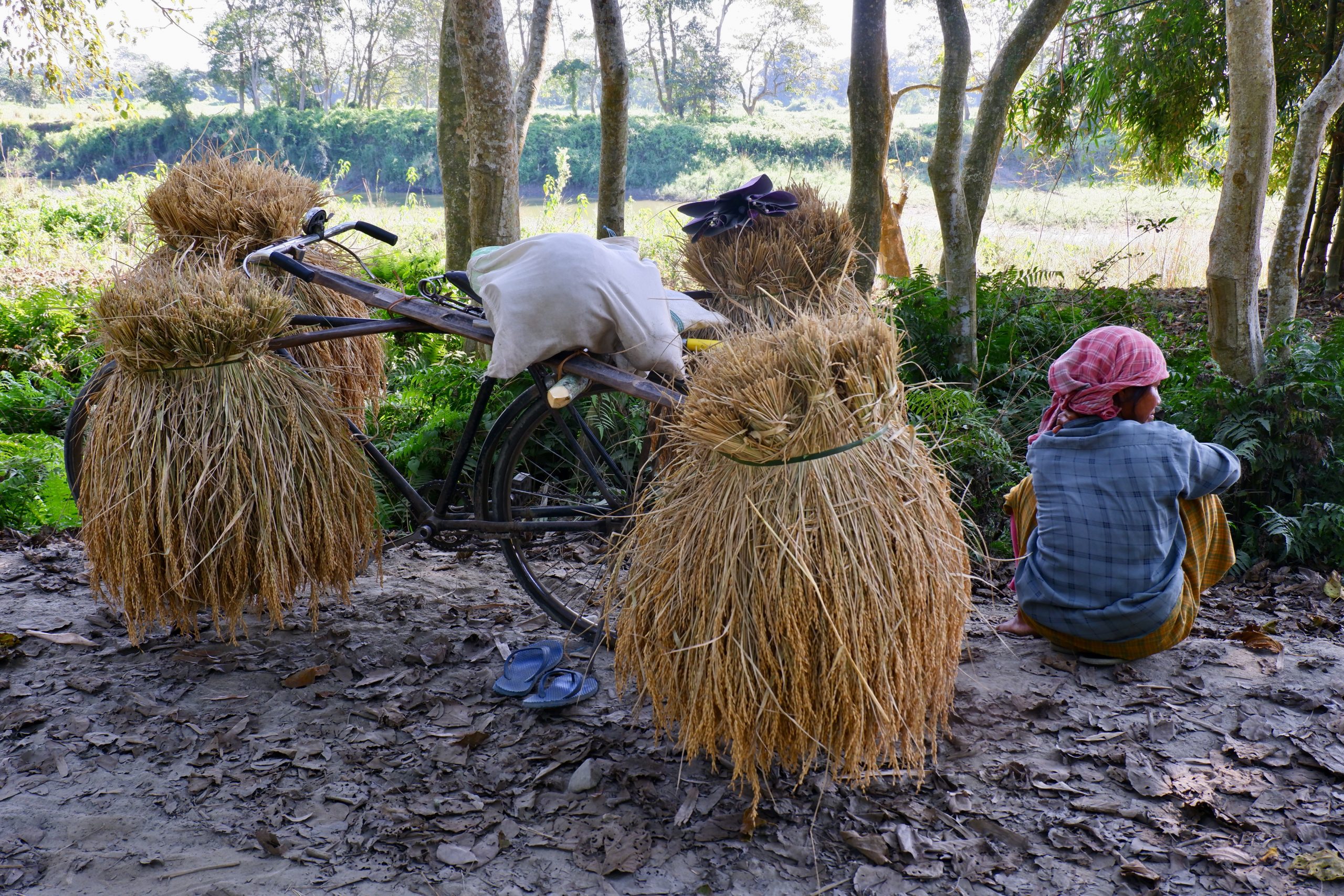 19
19
 Fishing
Fishing
We then reached another river that we had to cross—this time without a bridge, only by ferry. And not before we had also tried some rice wine (Raju nobly volunteered) and tasted pomelo. Here, pomelo is prepared with salt and chilli, and people consider it a fantastic combination.
 20
20
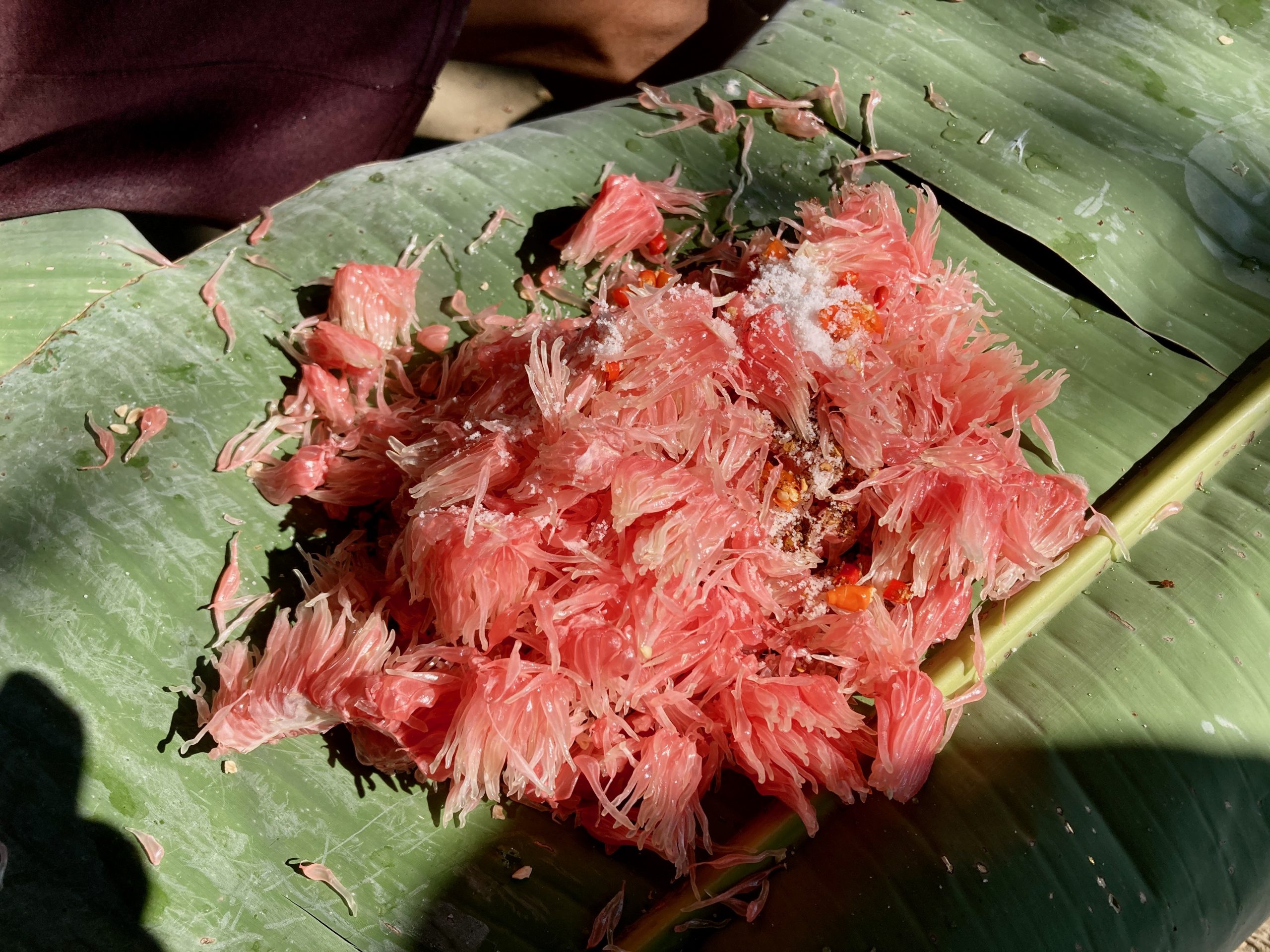 21
21
 22
22
 23
23
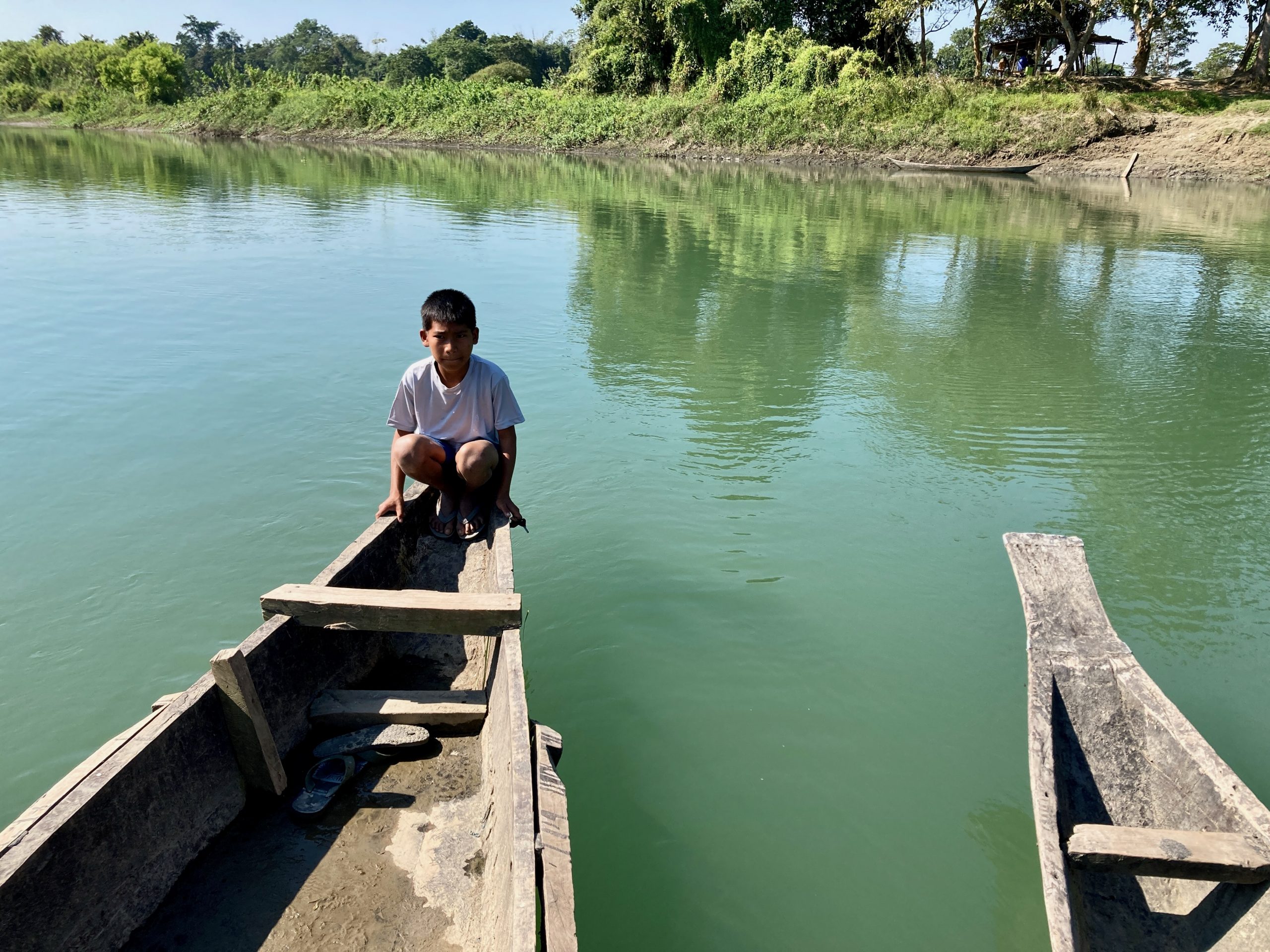 24
24
I very quickly lost my sense of direction — and even our guide took a wrong turn once. And that was despite a villager having drawn him the route so nicely:
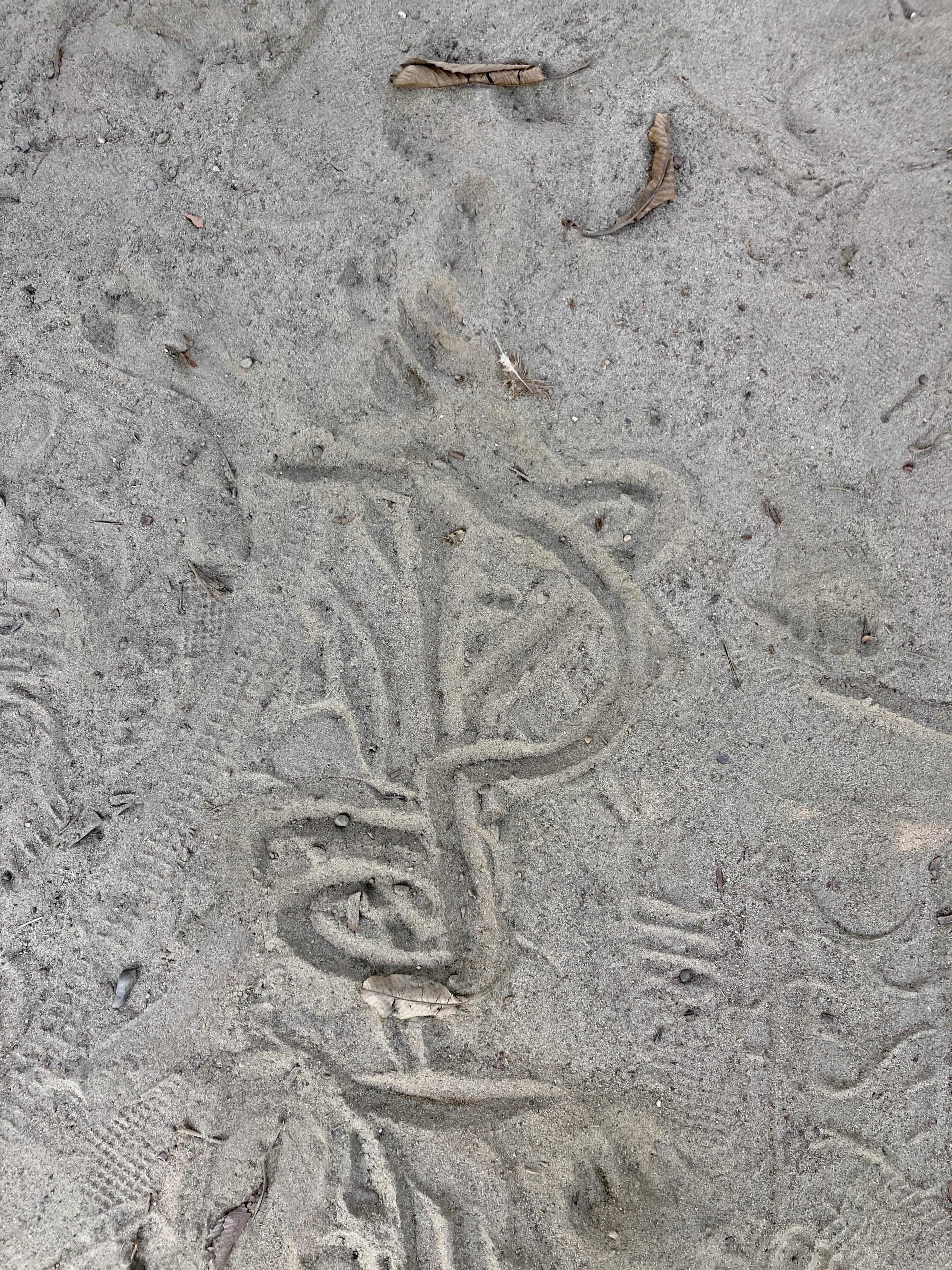 Wegplan
Wegplan
My bump was slowly starting to complain. The ground was quite bumpy with lots of stones. So I was relieved when we finally reached our lunch destination. The host had already come to meet us because we had taken a wrong turn and were running a bit late.
Lunch was a highlight! We climbed up a narrow, special staircase into a typical bamboo house, where the lady of the house was already waiting for us with the food. There was a bamboo table — but that’s actually for tourists; they themselves usually eat on the floor. They also eat without cutlery — so we didn’t get any either. Ah yes, which meant we first had to wash our hands, of course. There was a pump in front of the house, though it was supplied with water through a hose from somewhere.
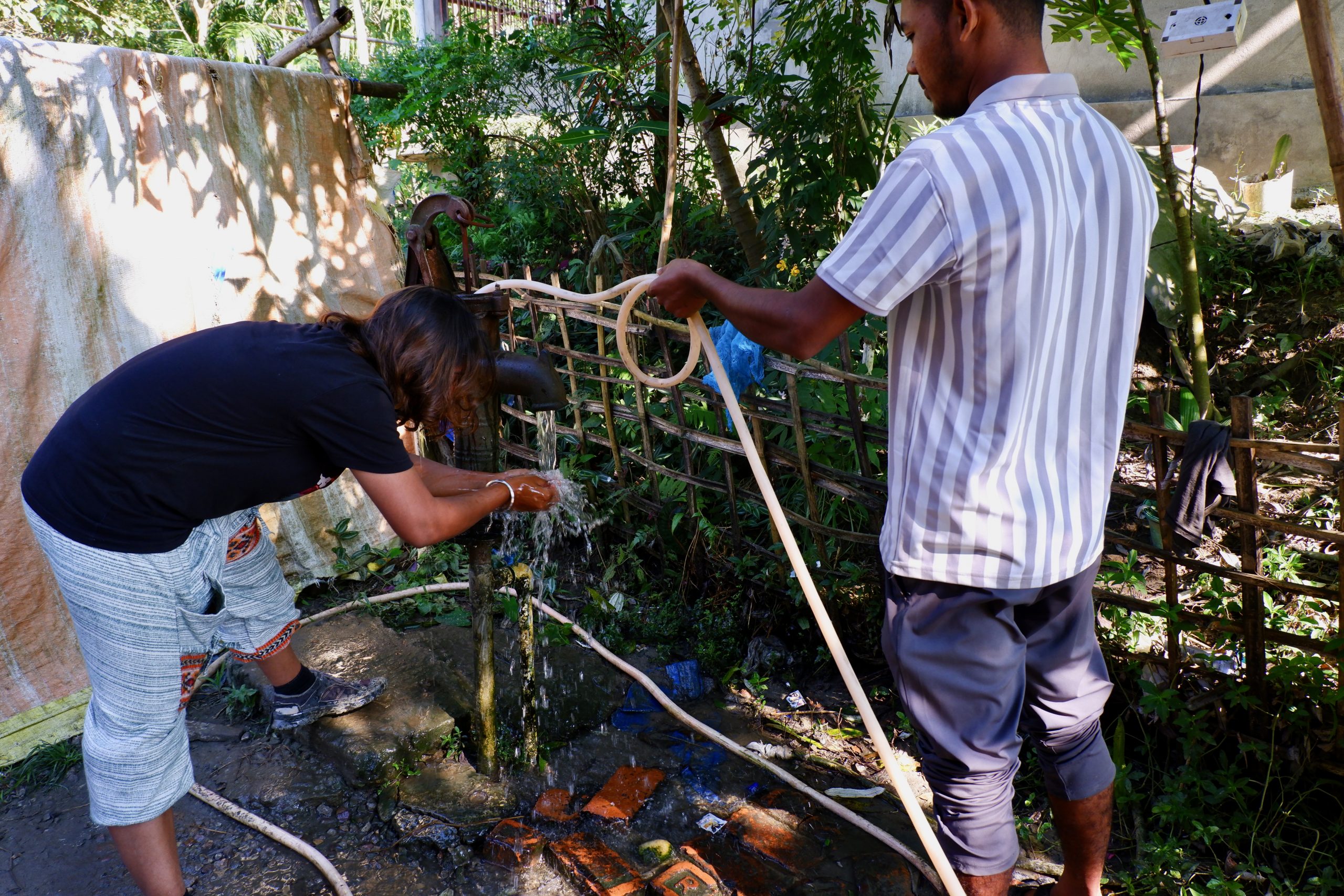 25
25
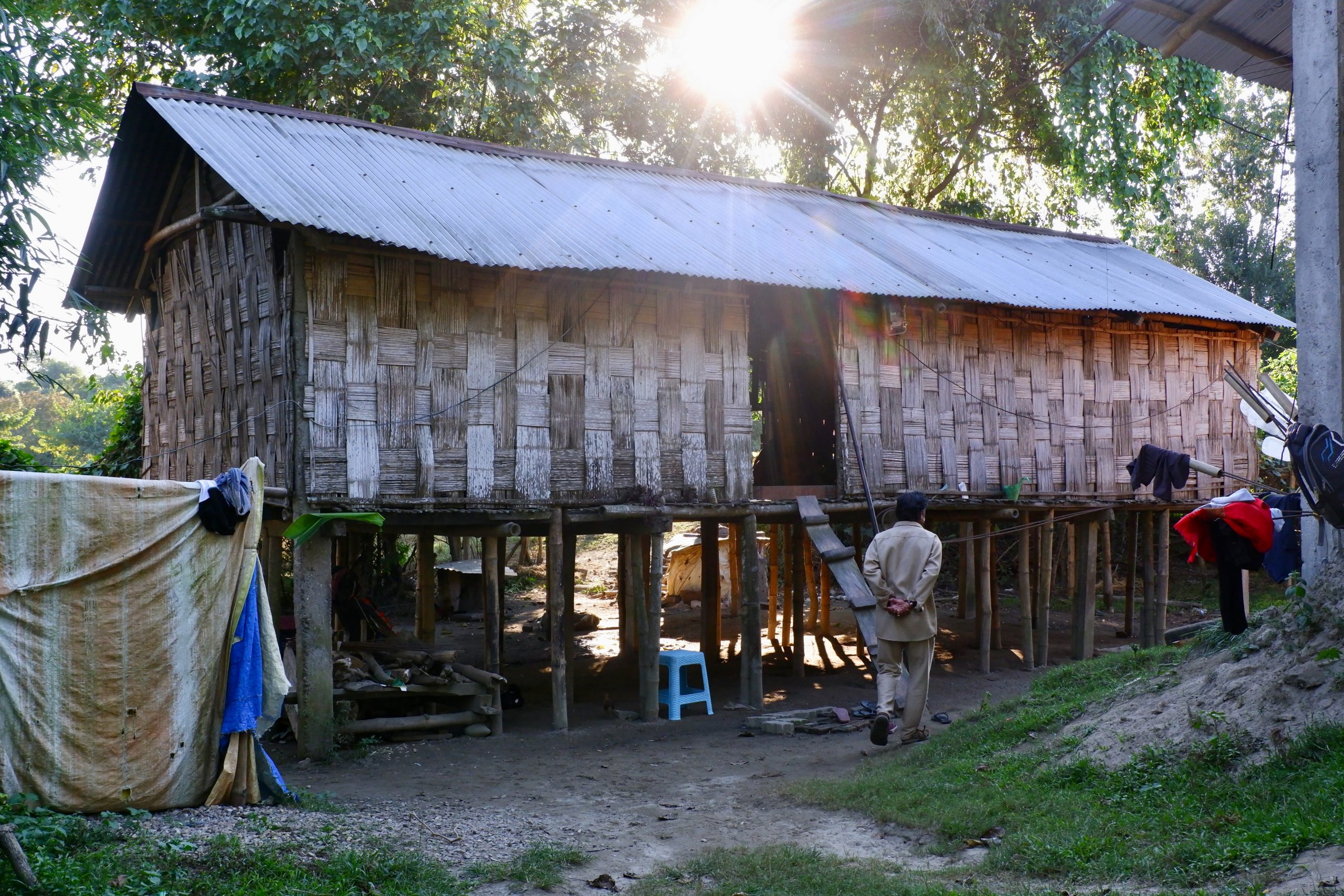 House
House
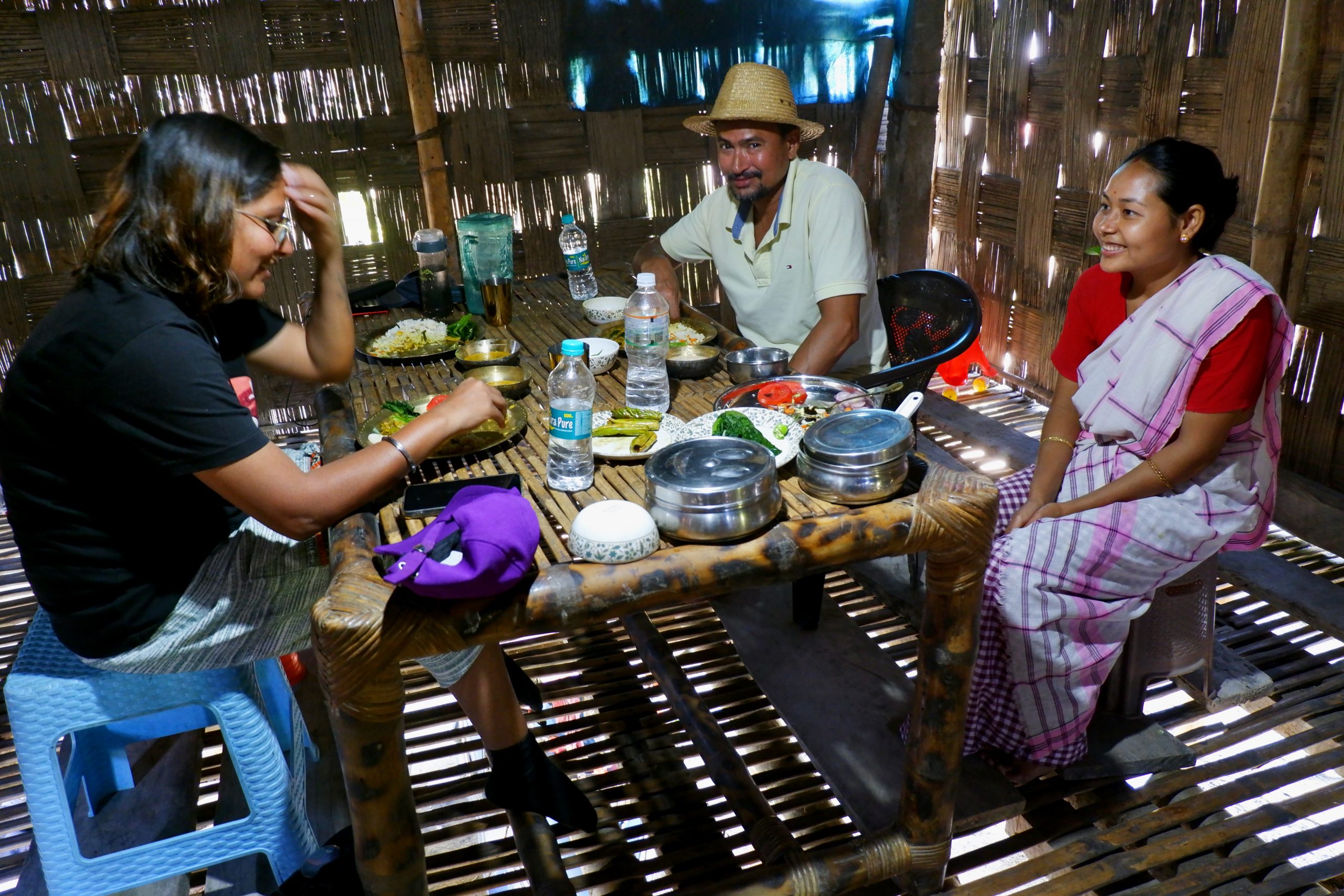 dinnertable
dinnertable
 lunch
lunch
For lunch we had: rice, vegetables with potatoes, a vegetable I didn’t recognise, a pumpkin dish (good for the skin! and my favourite), salad and dal. There was also rice wine, but once again only Raju wanted to drink it. The food was cooked over wood in the middle of the house at the hearth. Here too, they believe that food cooked over wood tastes much, much better than gas or anything similar. Above the hearth there is a structure with several levels — perfect for keeping things warm or for drying them. The temperature inside the house was very pleasant. There was also a bed in which her parents-in-law sleep..
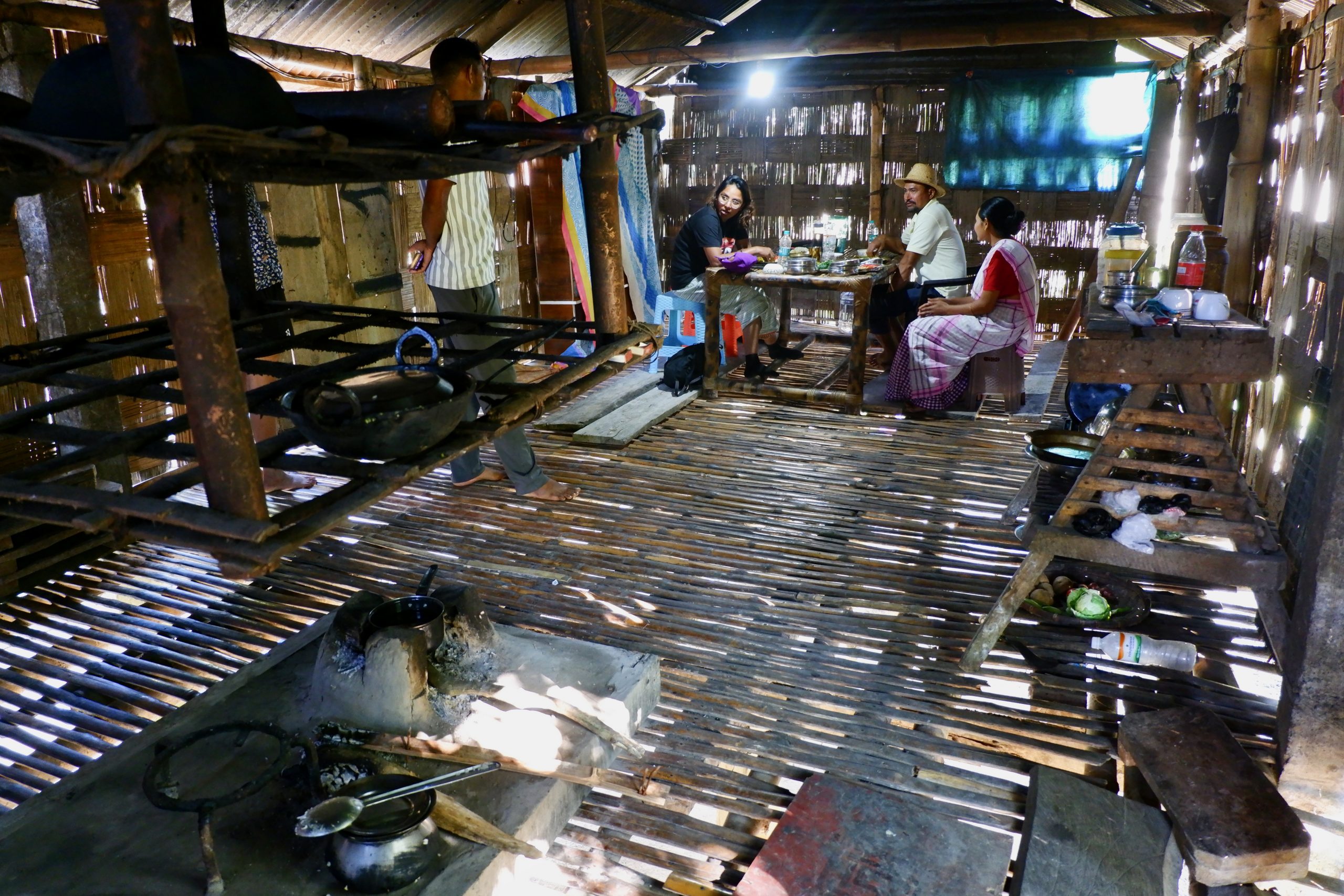 Room
Room
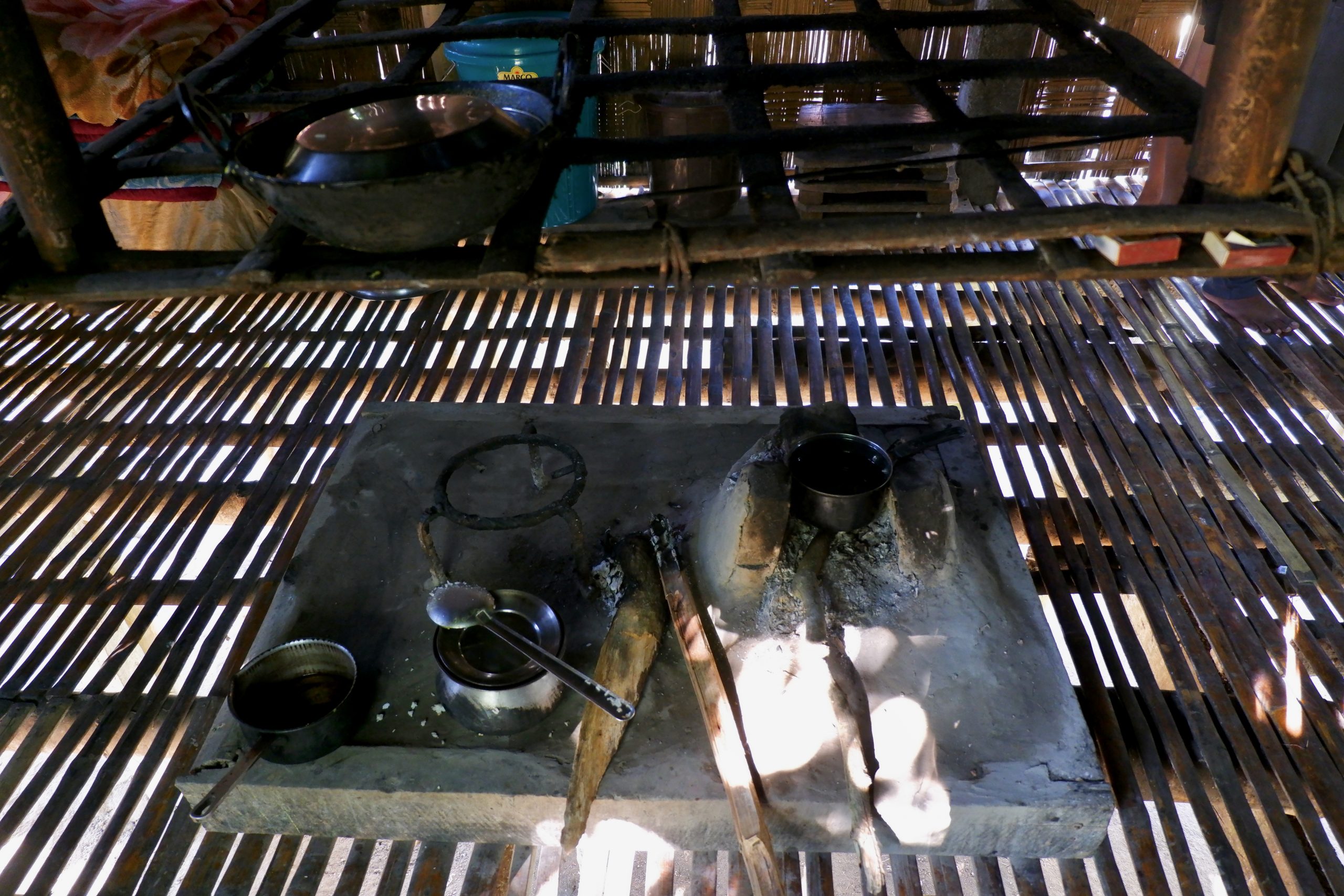 Fireplace
Fireplace
And where does the romance come in? This is the story our hostess told us. She is from a village quite far away, about half a day’s journey. And once she received a phone call that was actually meant for someone else. But she started talking to the person on the other end of the line. It was nice. Later they switched to video calls. And then he visited her (such a long way!) and quickly asked for her hand in marriage. Her parents weren’t really happy about it, but what can you do when love is there?
 talk
talk
They live in the house next door and have a four-month-old baby. Isn’t she — as is common in many parts of India — supposed to stay with her mother during the first months? You only do that when the relationship with the mother-in-law isn’t so good. But hers is kind; they get along well.
Then we climbed back down out of the house and took even more photos:
 more talk (this is the husband)
more talk (this is the husband)
 Groupphoto
Groupphoto
Our time actually wasn’t quite up yet and we could have cycled a bit more. But my bump was hurting so much by then — and Bhakti’s too — that we took the shortest route back. On the way, however, we were still able to see some bridge damage.
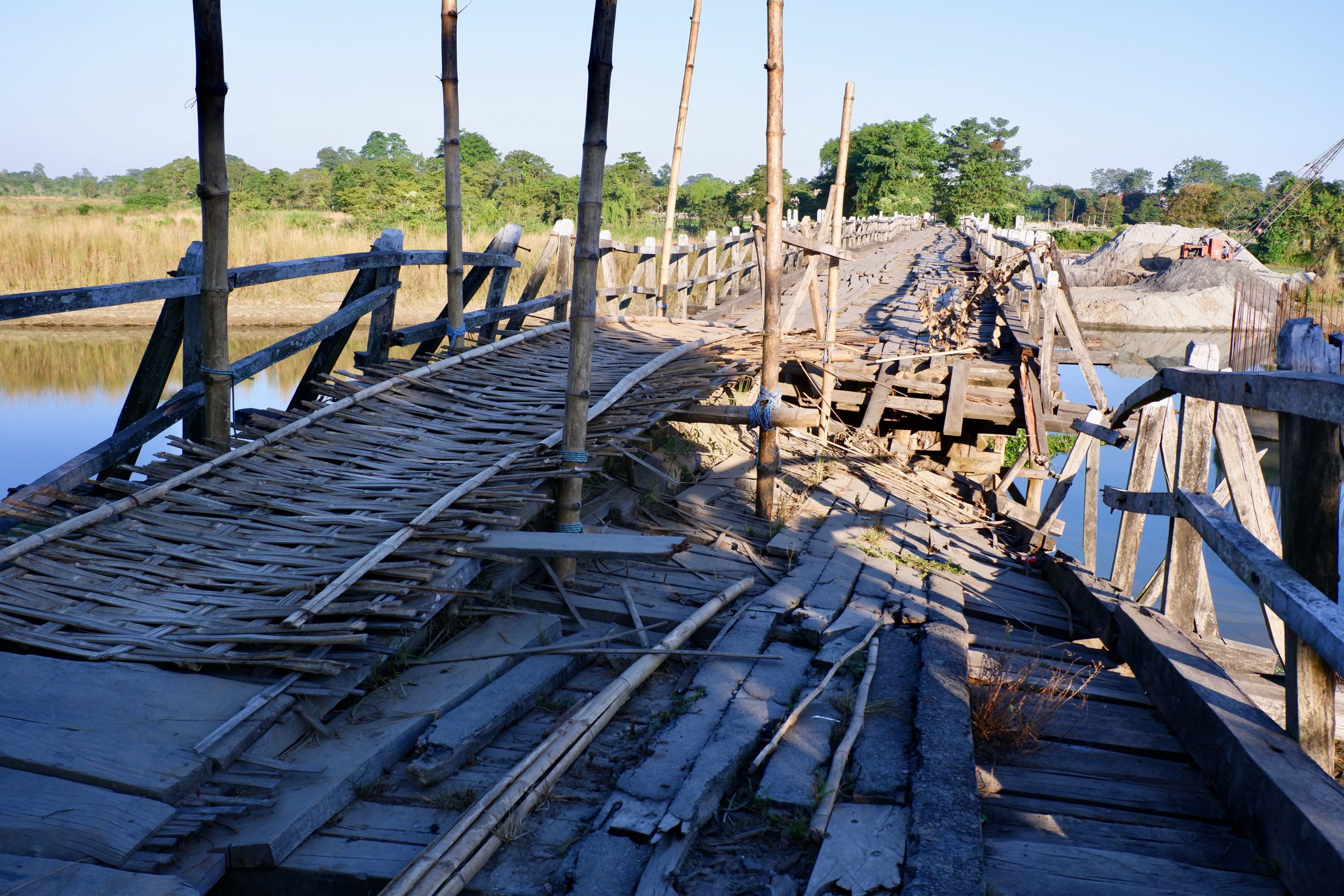 broken bridge part
broken bridge part
Next door, a concrete bridge is being built. To get to Jorhat you still have to take the ferry, of course. A bridge is being built there as well. People do fear that this will mean the end of the peaceful, quiet atmosphere, but because it will provide fast access to the hospital and medical care, the construction of the bridge is ultimately welcomed.
 Fields
Fields
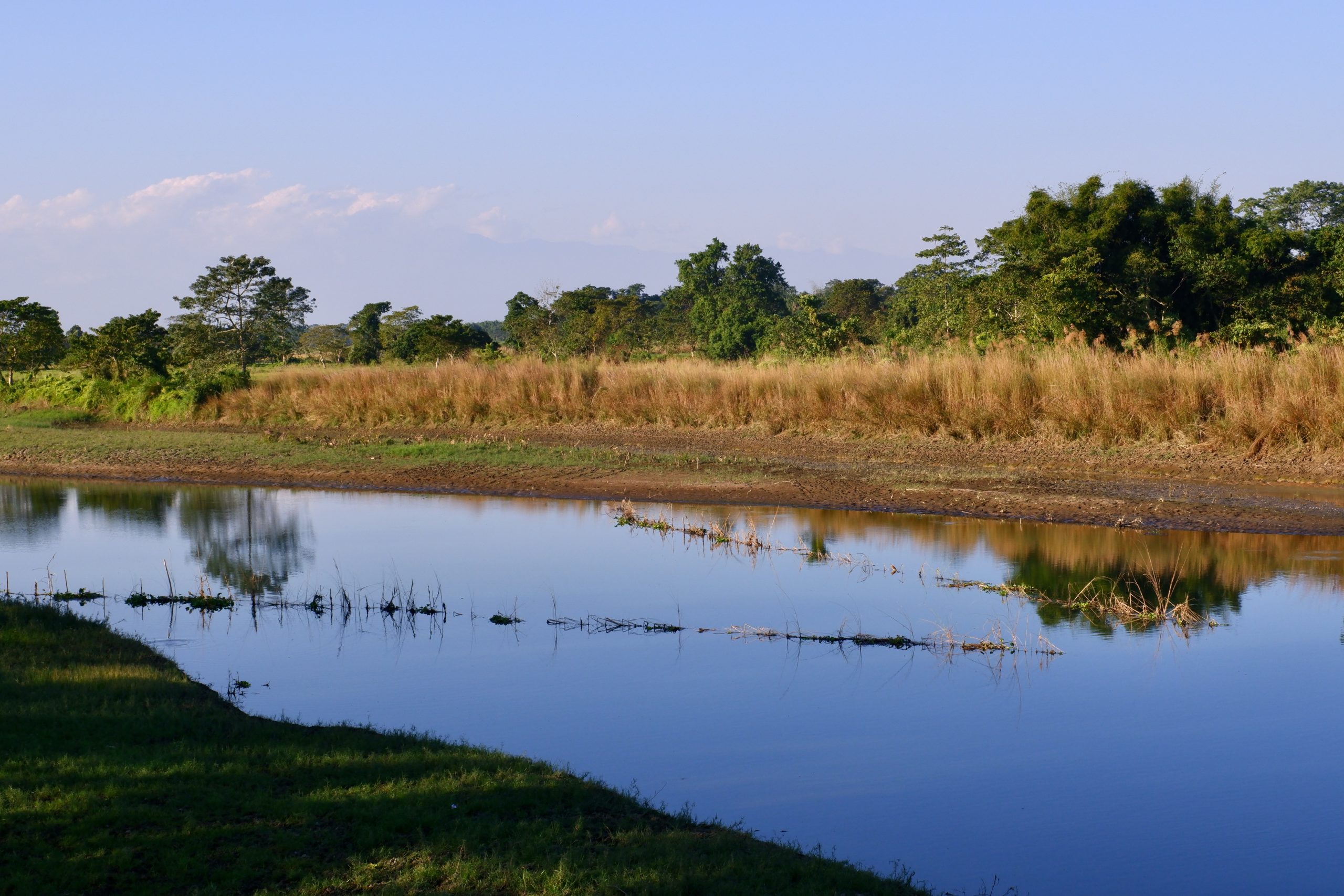 river
river
One major crop here is mustard. If we had taken the longer route, we could have seen a traditional mustard mill. But this way, we “only” managed to see the electric one in the village.
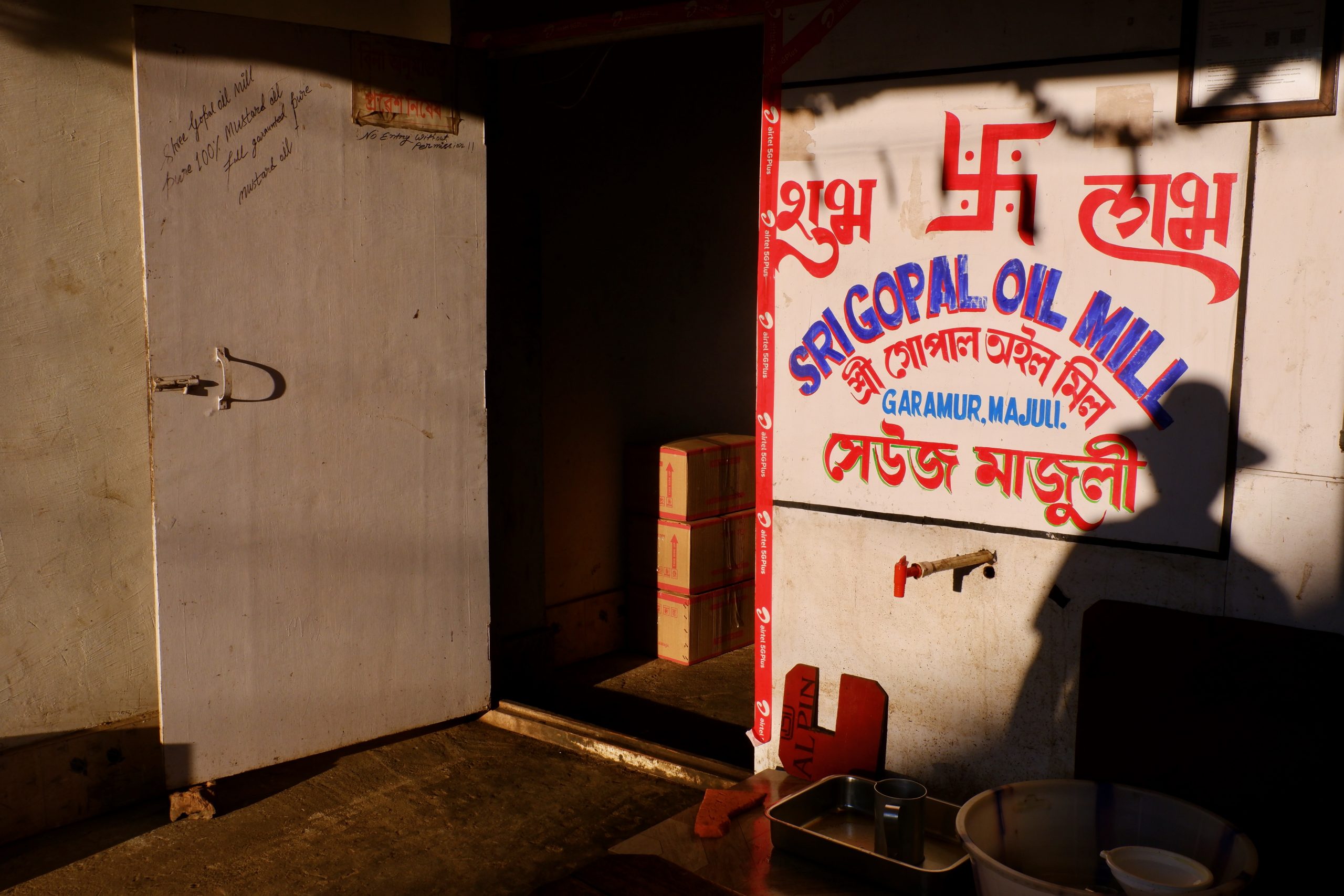 mustard mill
mustard mill
 Machine
Machine
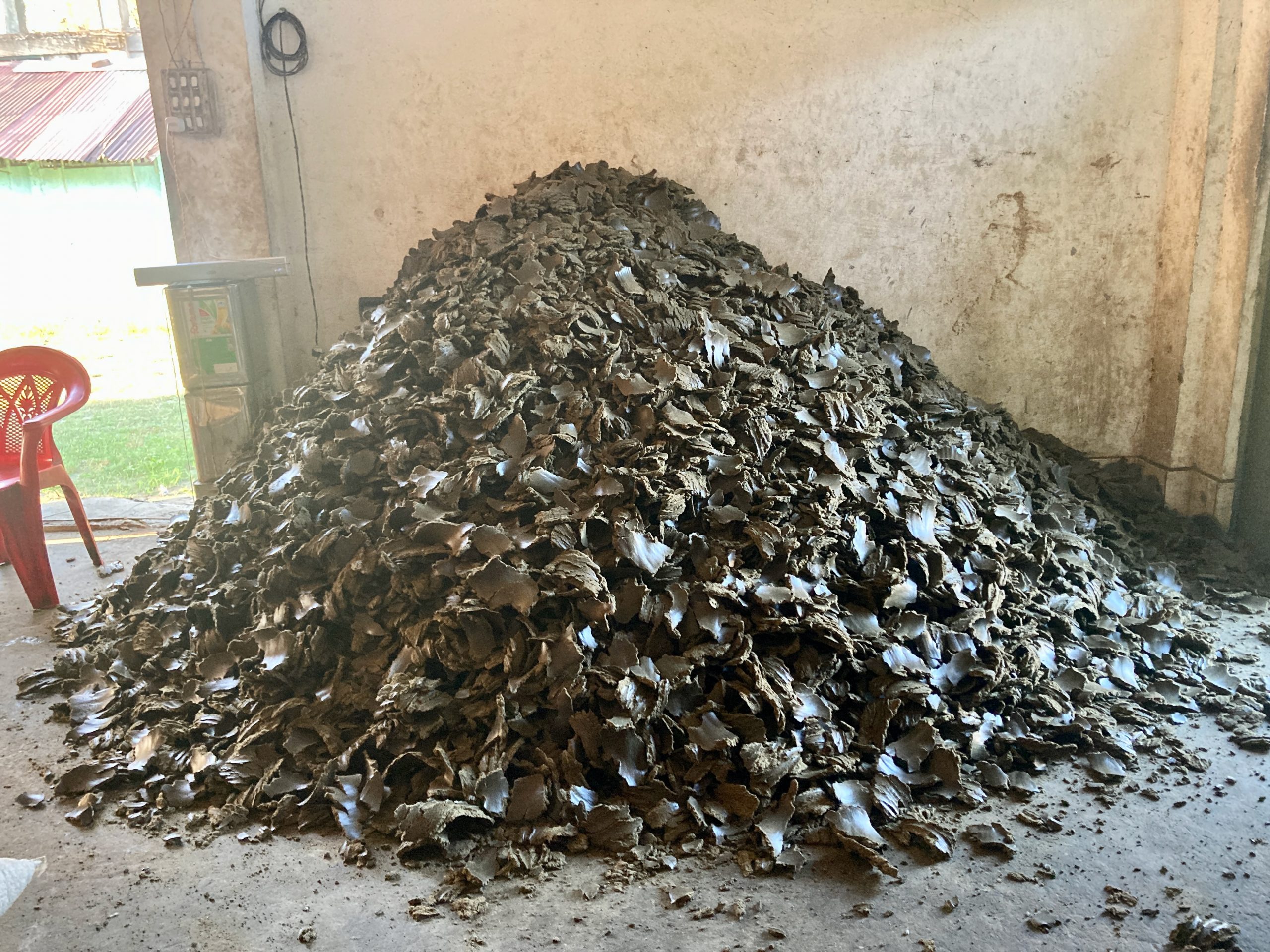 Rest
Rest
You put the mustard seeds into the machine again and again, and it keeps pressing and pressing until there is really nothing left. The leftover residue makes an excellent fertiliser.
It had been a wonderful outing. We cycled about 23 km — not that much, but too much for our bumps. We stopped often to look around, have things explained to us, or simply chat. It was all very harmonious — just like the island itself, with its villages and people. In the end, we had another tea at our accommodation and thanked our host. Here he is in the photo.
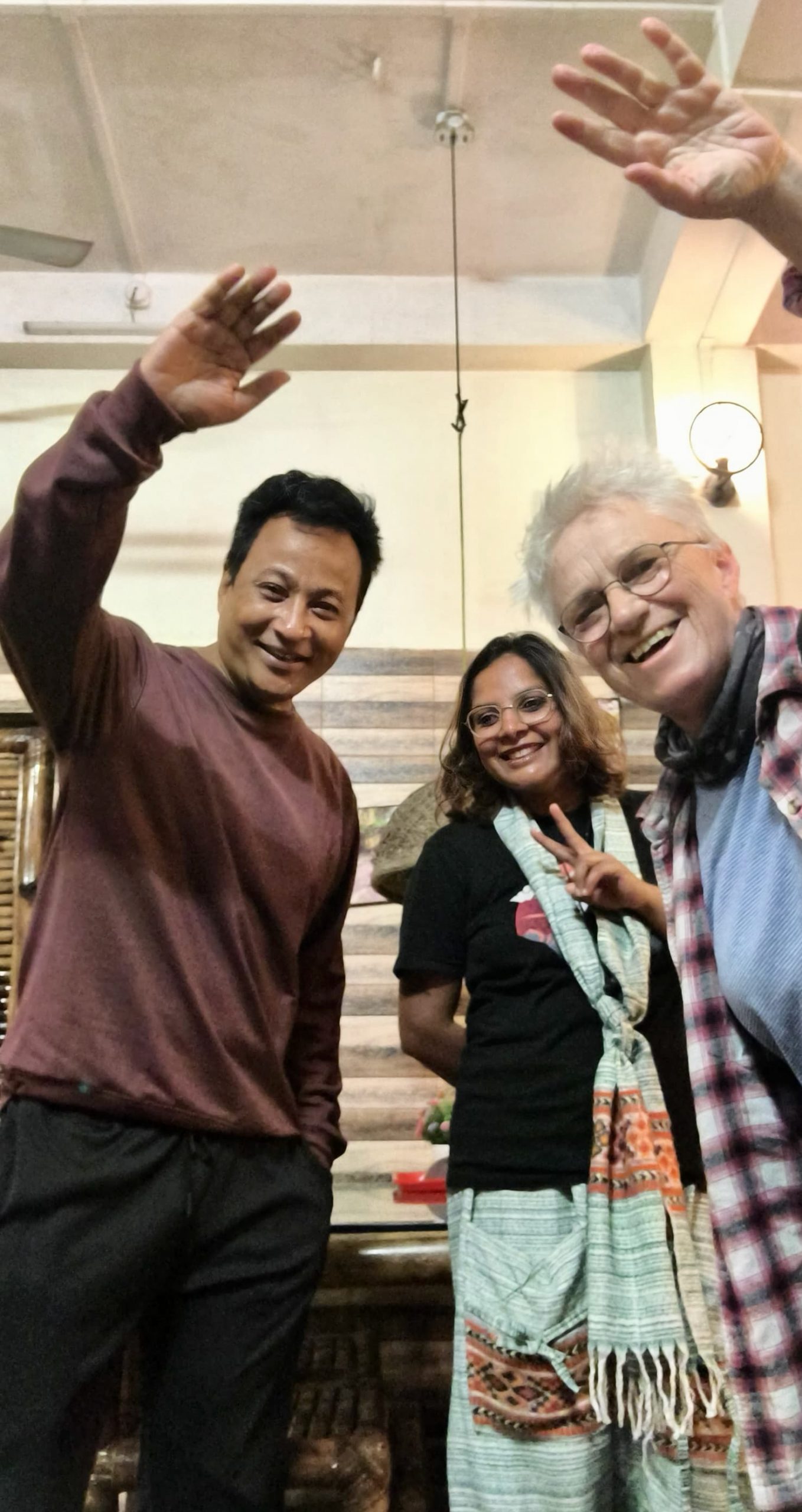 with host
with host
Majuli managed to win me over after all, despite the rough start. Bhakti and I exchanged numbers — and now I even have someone I could visit in Mumbai!
Maybe some of the “new” Indian travellers are unpleasant, but there are definitely those who are very pleasant and a joy to be around. Bhakti is one of them. And Monjit is also exactly the kind of host you could wish for. This already sounds like a farewell — and I was indeed planning to go to Jorhat the next day.
But before that, I wanted to go and see something on my own — a place I would probably visit again later with the group.
